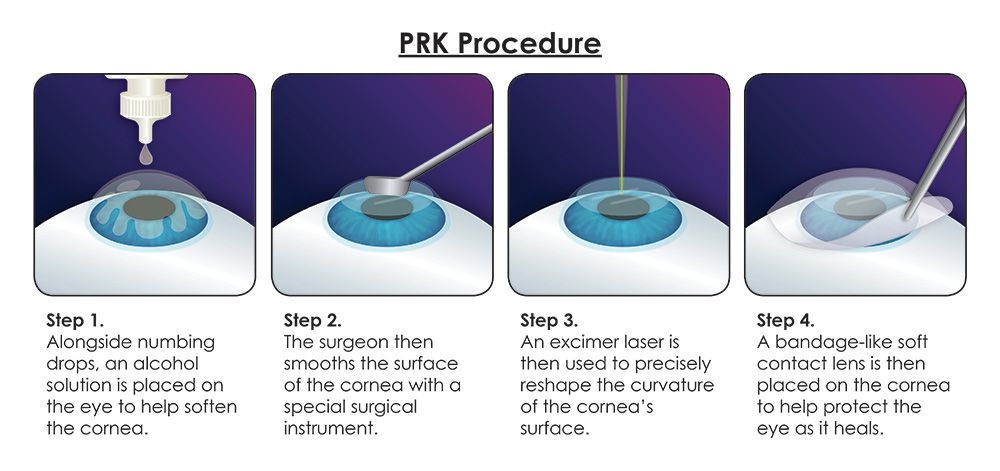Some potential laser vision correction candidates may not be well suited for LASIK.
For example, for patients with a thinner than average cornea, with a drier corneal surface, or with an atypical corneal shape, Advanced Surface Treatment may be a better alternative.
Advanced Surface Treatment is sometimes referred to as Photorefractive Keratectomy (PRK), LASEK or EpiLASIK. These procedures have the following in common: Only a very thin layer of the surface of the cornea (the epithelium) is scraped off without creating a flap and then the excimer laser is applied to reshape the cornea. After the treatment, the recovery is somewhat prolonged, because the healing of the surface (or regeneration of new epithelium) is a slow process that can take several days.
Most patients can return to normal visual activities in about four to five days after the procedure. The main difference between Advanced Surface Treatment and LASIK is that SurfaceTreatment has a slower visual recovery and involves more discomfort in the immediate postop interval than LASIK. After Surface Treatment, patients are provided additional medications and instructions to reduce discomfort within the first 48 hours and facilitate recovery.
Surface Treatment has been demonstrated to provide a safe and effective alternative to LASIK, for those patients who are not suitable candidates for LASIK.
Following your comprehensive presurgical evaluation, our doctors will advise you which procedure will most benefit you.


